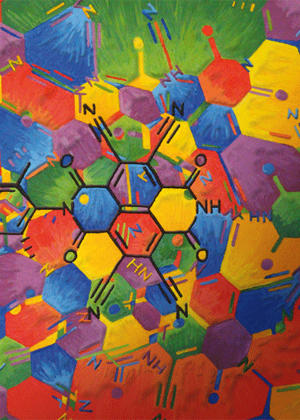143
Experimental evidence for the functional relevance of anion-pi interactions
R. E. Dawson, A. Hennig, D. P. Weimann, D. Emery, V. Ravikumar, J. Montenegro, T. Takeuchi, S. Gabutti, M. Mayor, J. Mareda, C. A. Schalley, S. Matile – 2010
Attractive in theory and confirmed to exist, anion–π interactions have never really been seen at work. To catch them in action, we prepared a collection of monomeric, cyclic and rod-shaped naphthalenediimide transporters. Their ability to exert anion–π interactions was demonstrated by electrospray tandem mass spectrometry in combination with theoretical calculations. To relate this structural evidence to transport activity in bilayer membranes, affinity and selectivity sequences were recorded. π-acidification and active-site decrowding increased binding, transport and chloride > bromide > iodide selectivity, and supramolecular organization inverted acetate > nitrate to nitrate > acetate selectivity. We conclude that anion–π interactions on monomeric surfaces are ideal for chloride recognition, whereas their supramolecular enhancement by π,π-interactions appears perfect to target nitrate. Chloride transporters are relevant to treat channelopathies, and nitrate sensors to monitor cellular signaling and cardiovascular diseases. A big impact on organocatalysis can be expected from the stabilization of anionic transition states on chiral π-acidic surfaces.
Experimental evidence for the functional relevance of anion-pi interactions



